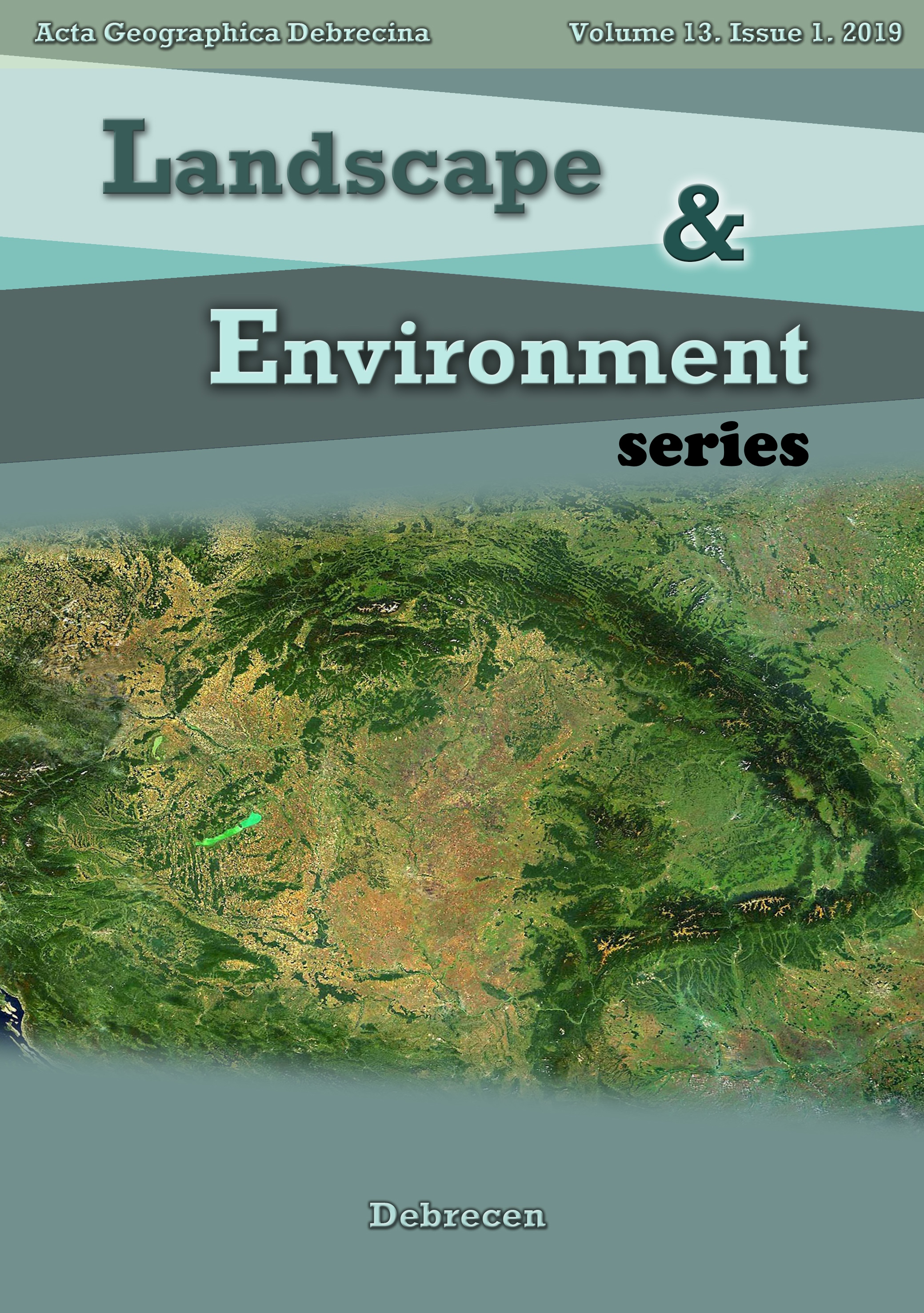Vol. 13 No. 1 (2019)
Doulay Kadiza – Abdoulaye Diouf – Abo – Soufianou Sadda – Ibrahim Baba Yakubu. Landuse/landcover change process in a tropical semi-arid zone: case of two rural communes (Chadakori and Saé-Saboua) in Maradi region, Republic of Niger
Gabriel Jonathan Amissah – Tímea Kiss – Károly Fiala. Active point bar development and river bank erosion in the incising channel of the lower Tisza river, Hungary
##issue.tableOfContents##
Articles
-
Landuse/landcover change process in a tropical semi-arid zone: case of two rural communes (Chadakori and Saé-Saboua) in Maradi region, Republic of Niger
1-12Views:304The study aimed to analyze the process of Landuse/Landcover change of two rural communes (Saé Saboua and Chadakori) of Maradi region (Republic of Niger) over the past 28 years (1986 – 2014), through landscape structure analysis by diachronic cartographic approach and landscape indices. Mixed classification of temporal series of Landsat images led to identifying six Landuse/Landcover (LULC) classes, namely ”cultivated land under shrubs and trees”, ”cultivated land under trees”, “continuous cropland”, ”fallow/pasture land”, ”forest reserve”, and ”settlement”. The composition and structure of the studied landscapes have greatly changed from 1986 to 2014. The class ”cultivated land under trees” was the landscape matrix in 1986 with 38.65% of landscape total area but in 2001 and 2014 the class ”continuous cropland” became the landscape matrix. The changes also affected the ”forest reserve” which was transformed to smallholder agricultural land from 1986 to 2014. The area occupied by classes ”cultivated land under trees” changed from 38.65% in 1986 to 8.78% in 2014; and from 1986 to 2014, the area occupied by ”fallow/pasture land” has decreased of about 16%. The decrease in these classes was in favor of ¨continuous crop land¨, ¨settlement¨ and “cultivated land under shrubs and trees” which respectively gained 38%, 0.3% and 8.15% of their areas in 1986. The results of this study reflect the problem of access to land and even land saturation in semi-arid region, a consequence of strong population growth. They also contribute to a better rethinking of agricultural practices in order to initiate adaptation and resilience strategies for the population facing food insecurity and poverty.
pdf567 -
Active point bar development and river bank erosion in the incising channel of the lower Tisza river, Hungary
13-28Views:374The development of point-bars and bank erosion are critical near-bank processes, as they indicate the sediment and hydraulic regime of a river system, thus, they refer to the equilibrium conditions of a channel. However, throughout history, rivers have been modified for various benefits which change the development of point-bars and the rate of bank erosion. In the Lower Tisza River (Hungary), river regulations influenced the channel and floodplain development, altering the natural fluvial processes. The aim of the research was to determine the rate of near-bank processes and to make trajectory for future river evolution to support future engineering works. The bank erosion and point-bar development at human-influenced and freely meandering sections of the Tisza River were monitored since 2011. Behind a collapsed revetment, the bank erosion rate was 0.6 m/y, while at a freely meandering section it was 2.3 m/y. The studied point-bars are located in revetted and freely meandering sections. Their surface eroded within the period. These intensive erosional processes refer to an incising meandering channel, which must be considered during future planning of in-channel structures (e.g. revetments, bridges), thus, geomorphic methods must be considered in any river engineering scheme.
pdf440
